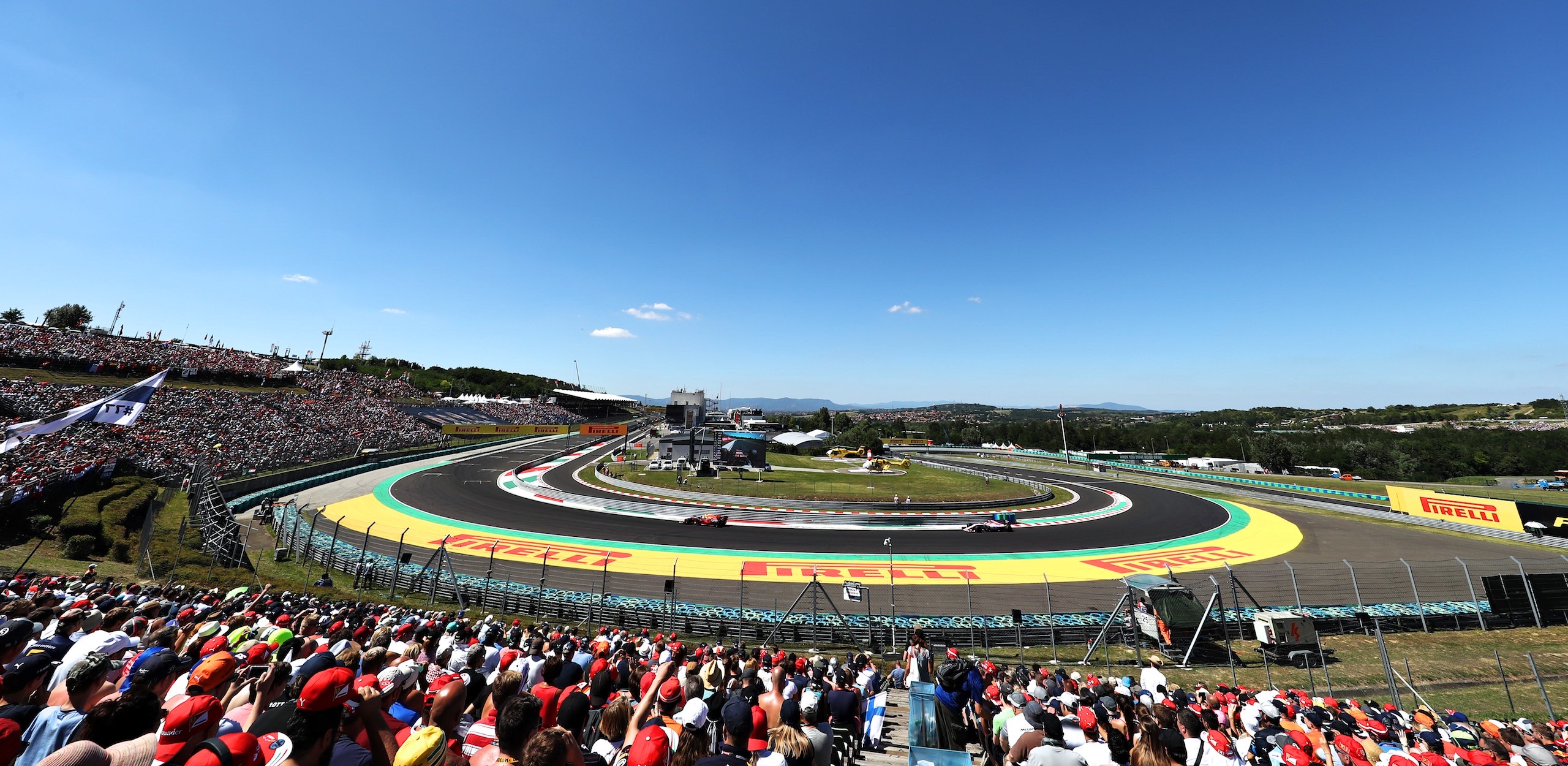
Sebastian Vettel battled his steering wheel, his teammate Kimi Raikkonen and both of Mercedes’ aces to clinch a gritty 1-2 victory for the Scuderia in the Hungarian Grand Prix.
Despite a record pole time, Vettel found he had ghosts in his machine during the race as his Ferrari’s steering suddenly lost its bearings. He stayed focused while holding off his quicker teammate and the Mercedes team’s double-teaming attack. Always a difficult overtaking track, the Hungaroring circuit proved to be Vettel’s secret weapon as both Mercedes’ aces wore out their tyres trying to find a way to overtake teammate Raikkonen. In the end, Ferrari notched up its second one-two of the season while Vettel increased his championship lead over Lewis Hamilton to 14 points.
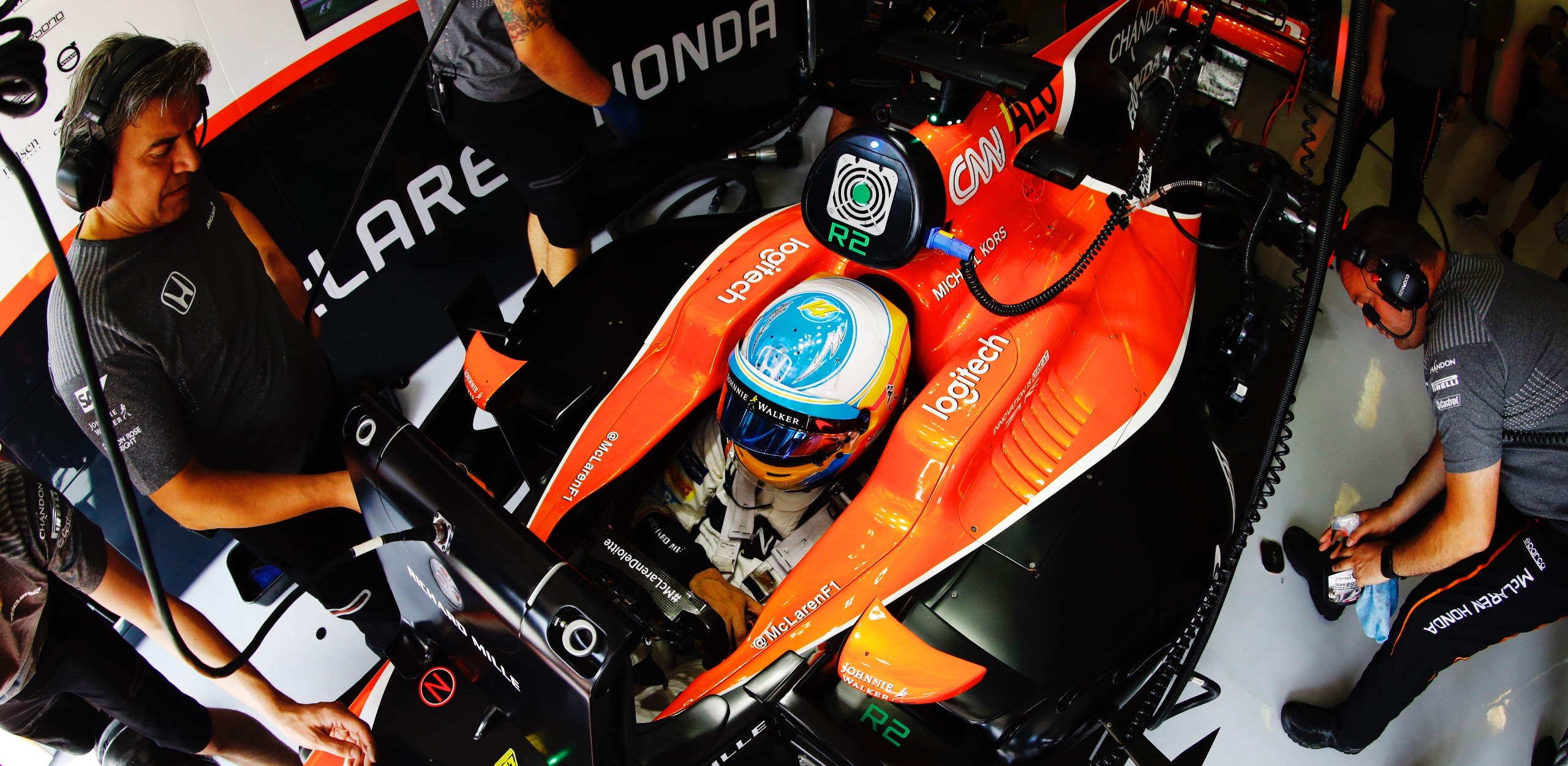
The measure of a team is its ability to stand by their strategy when all around them are crying for its abandonment. In the recent past, Ferrari erred on the side of doubt, changing their plans when their rivals surprised them.
Hungary proved that this season’s Ferrari has broken from the past. Sebastian Vettel might have dominated qualifying, but when his steering mysteriously lost its centre and then lost his untouchable lead, commentators quickly urged that Ferrari put Kimi in front. Ferrari didn’t budge, though Kimi’s pointed situational assessment of being tossed first into Bottas’ clutches and then into Hamilton’s DRS window left no doubt that he felt the team had lost their grasp on reality.
Far from it. Leaving Vettel in the lead gave them a chance at a 1-2. Putting Kimi in front would have brought the Scuderia, at best a 1-4. Kimi had retained his Mercedes-leading pace, holding Bottas in stasis for 50 laps. Hungaroring rivals Monaco for the “un-passibility” champion. Every corner Vettel could scratch through ground away Mercedes’ fresher tire advantage. This season, Mercedes doesn’t chase well, and having turbulent air on their front wings in Hungary brought washed out fronts and then loose rears. Bottas couldn’t find the combination and let Hamilton by to see if he could. He was able to get into DRS range just once and then fell away. The game, set, and match then for Ferrari’s newly found trust in itself.

The F1 circus has held 32 Grands Prix at the Hungaroring, just 20 minutes outside Budapest. The 11th of 20 Grands Prix, Hungarian Grand Prix is traditionally the final Grand Prix before F1’s FIA enforced “Summer Break”. The FIA forces F1 teams to stop all development, testing and race preparation for the month of August, leaving their factories to give team members a chance to catch their breath and visit their families. Thus, it’s the “momentum” Grand Prix; whoever takes victory carries that positive boost and vibes for a month, while rival teams must sit on their hands instead returning punches with revised upgrades, sharper simulations and more skulduggery from aerodynamicists.
The Hungaroring is called Monaco without the walls for a reason. At 2.72-miles and 14 corners, it’s a track for nimble short-wheelbase cars (read Ferrari SF70H). The circuit’s located in a natural bowl that receives little breeze, with temperatures usually around 131-degrees F. The tight corners are relatively slow, the surface is narrow, and the serpentine nature of the track layout makes passing these days challenging. It wasn’t always like that though; Nigel Mansell won in 1989, working his way up from 12th, passing even Ayrton Senna on his way to a victory margin of 26-seconds. However, with contemporary F1 cars limited by clean air or the lack of it on their front wings, drivers looking to pass in Hungary are more likely to burn out their understeering front tyres from a lack of downforce before they see an opening.
One’s race setup must keep tyre pressures and temperatures from burning out the tyres’ compounds while carrying maximum downforce.
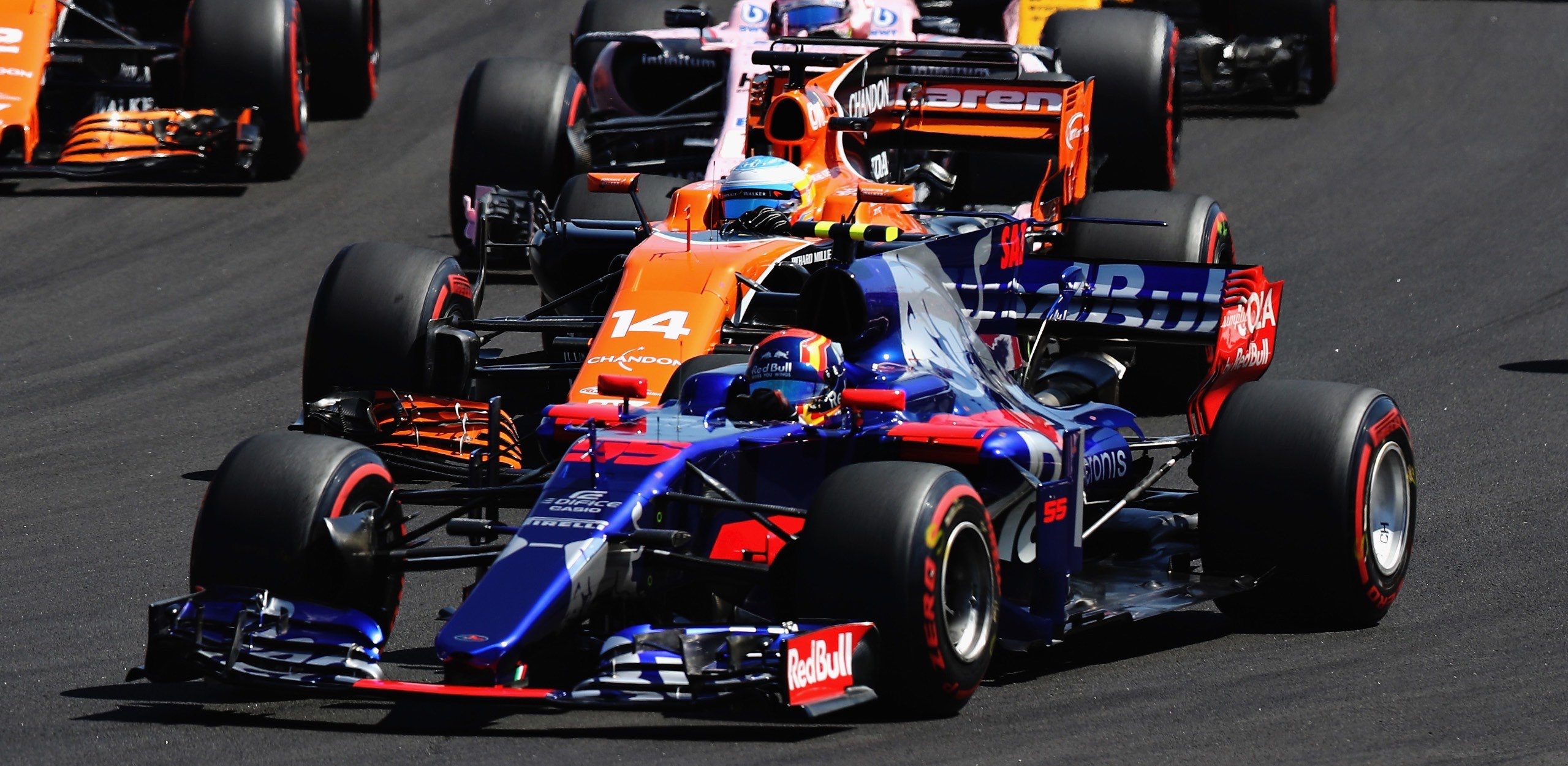
Red Bull won the “Next Massive Update Award”, arriving in Budapest with Adrian Newey modifications that offered an immediate improvement. Daniel Ricciardo was instantly quick, leading FP1 and FP2. Max Verstappen took a bit longer to find his comfortable balance point, and then he joined his teammate at the top of the timesheets. Mercedes’ long wheelbase car never seemed entirely comfortable; its rear would give up in a heartbeat. Despite the car’s best efforts to slam into the barriers, Valtteri Bottas qualified third.
As expected, when the short-wheelbase Ferrari got down to serious laps, it was game over. Sebastian Vettel casually arrived Friday on a vintage blue Suzuki and used both sessions as a comfortable test day, looking at different setups while reining in the car’s potential. Saturday morning was all business; his Q2 time of 1:16.8 was the fastest lap in Hungaroring history. He wasn’t finished. He lowered the boom in Q3 with a 1:16.2, with teammate Raikkonen, just .168-seconds behind. Ferrari seemed untouchable. It was Vettel’s 48th career pole. His pole lap was three seconds faster than the 2016 pole time, and two seconds quicker than the 13-year old record set by Rubens Barrichello in 2004.
The first four rows of the grid were Ferrari, Mercedes, Red Bull and…McLaren, having their best weekend in three long years. A chance at double points would be a huge lift for a team suffering through Honda’s three season power unit debacle.
Williams’ Felipe Massa fell sick in FP3, and so the team’s reserve driver, 31-year-old Paul DiResta was dragged out of the SkySport commentary booth to jump in the vacant seat. He hadn’t driven an F1 car since 2014 and hadn’t even sat in the 2017 Williams. He would qualify the car in 19th, just behind teammate Lance Stroll and then start the race on Sunday.
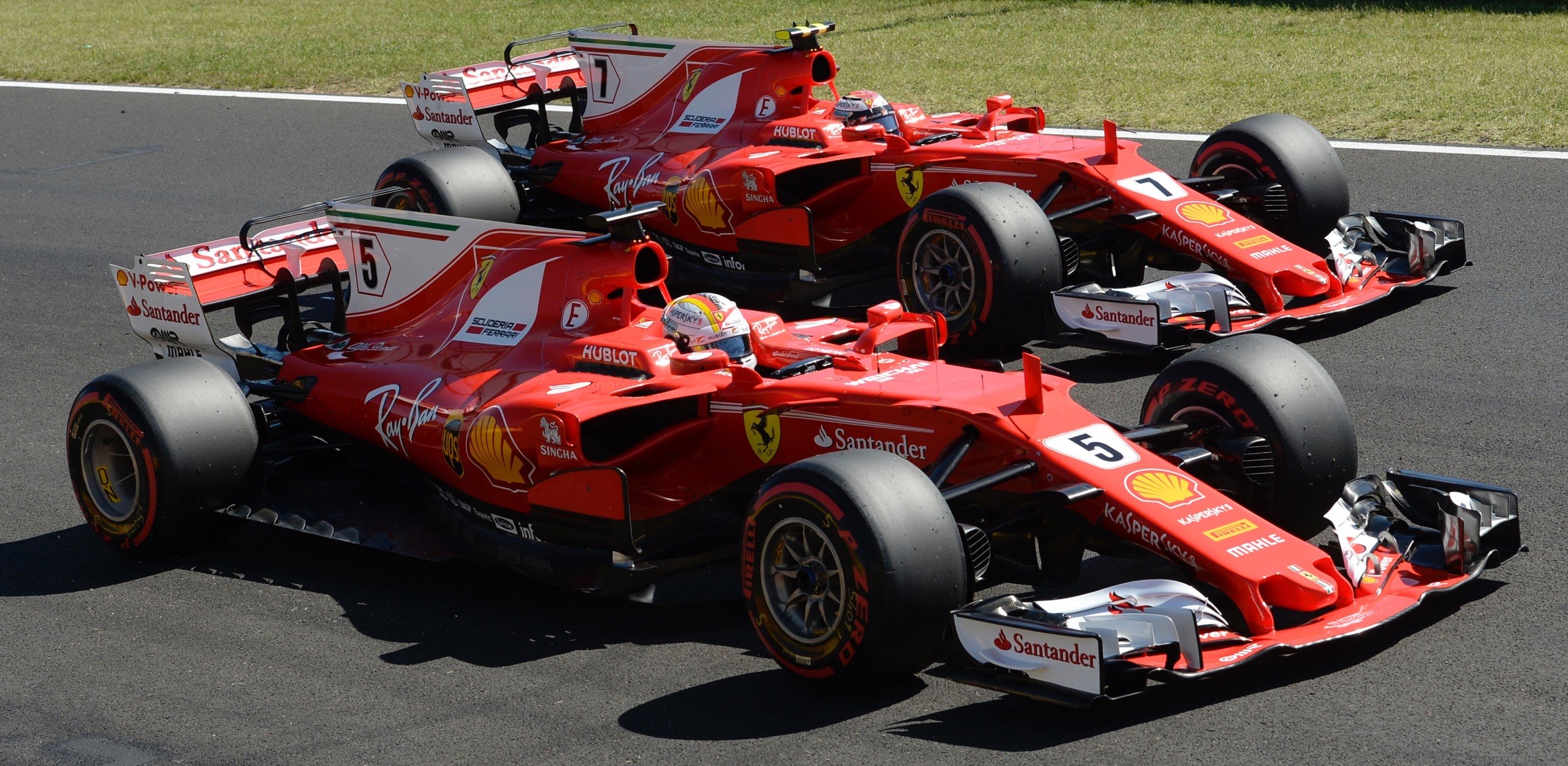
Vettel and Raikkonen made great starts giving the Mercedes duo no chance to challenge them into Turn 1. Bottas slipped into third place on the run down while Hamilton lagged behind. Verstappen, up from fifth place, bolted for the outside line around Hamilton, but slid off the track surface halfway around, putting him then side by side with teammate Ricciardo.
Verstappen stayed in Bottas’ wheel tracks, but his brief track excursion had cooled his tyres and perhaps picked up some stones. He entered Turn 2 too fast, touched his brakes and locked up momentarily. Even with his steering wheel at full lock, he couldn’t avoid ramming Ricciardo and puncturing the Aussie’s left side radiator. Verstappen escaped damage free, but Ricciardo’s leaking Red Bull was already terminal.
Ricciardo returned to the paddock livid at the young Dutchman. What looked like a racing incident was considered a punishable offence by the stewards, who penalised Verstappen ten seconds, to be served during his pit stop, or added to his overall finish time. It would prove to be a crucial factor in the race.
Up front, Vettel was in change and moving away. In clean air, his SF70H was in its element, and his super-soft tyre compound was getting stronger by the lap. Raikkonen comfortably took up station six seconds behind in second, running equally well on the same compound. Bottas, on the other hand, was just hanging on, losing up to a tenth of a second per lap. Back in fourth, Hamilton had radioed during the warm up lap that his rears would burn out before he reached his first pit stop window. He began to nurse his tyres by Lap 2. What he didn’t count on was the Mercedes team losing radio contact with both their drivers. Hamilton couldn’t relay news that his tyres were okay.
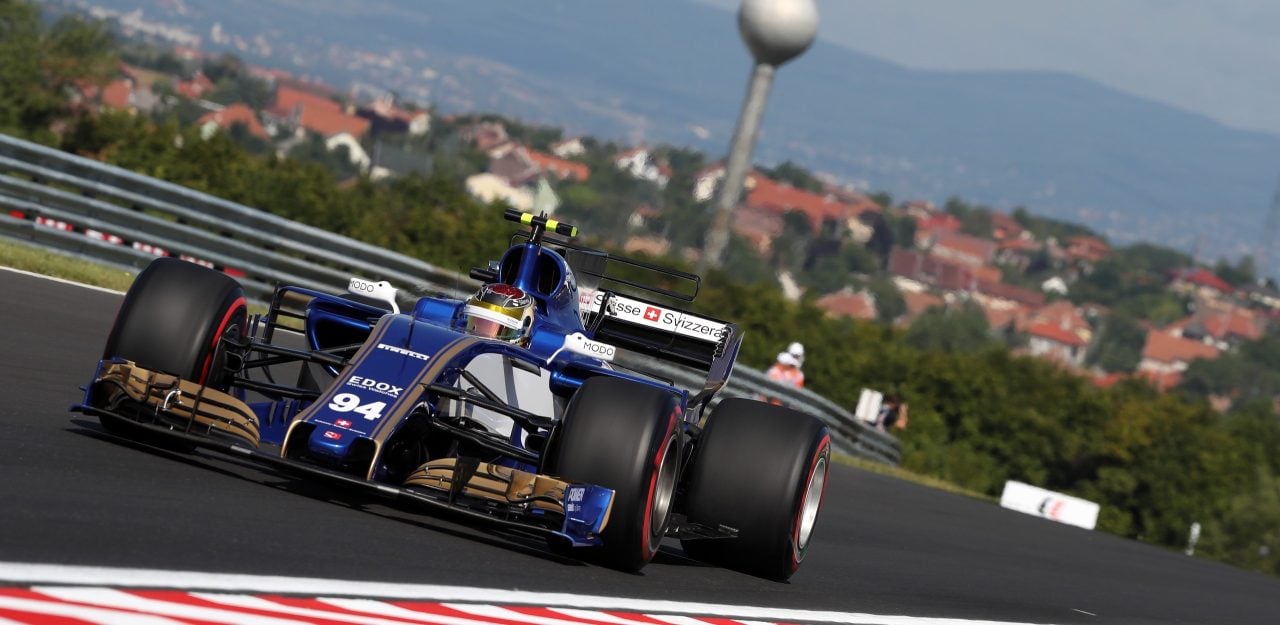
Shortly after Vettel had established a sufficient six-second lead over Raikkonen, his started steering wheel suddenly began to lose “centre” moving instead into a left side up position. His lap times began to slow.
Bottas pitted on Lap 31, followed immediately by Hamilton, then Vettel on 33 and finally Raikkonen on 34, allowing Verstappen to lead.
Vettel retook first when Verstappen eventually pitted on Lap 42, but the German was now loosing even more time to his steering wheel mystery. Raikkonen saw the Mercedes duo closing in and begged Ferrari not to put him under their pressure, asking instead that the team put him in front. Ferrari replied he should hold his position.
His radio contact regained, Hamilton suggested that Mercedes let him take over the chase from Bottas. The team agreed, asking Bottas to cede his position on Lap 47, but promising that Hamilton would give the place back should he fail to pass Raikkonen.
Once by, Hamilton took off after Raikkonen and within a few laps was nearly in DRS range. That was a close as he would get. With ten laps remaining, it was clear that Hamilton posed no threat.
Vettel crossed the finish line .908-seconds in front of Raikkonen. Hamilton slowed to give the third place back to Bottas on the final corner, then accelerated to keep the rapidly closing Verstappen in 5th, just 0.3 seconds behind. Without the 10-second penalty, Verstappen might have been racing for the win.
Fernando Alonso scored McLaren’s best finish of the season with 6th, while Stoffel Vandoorne made it double points with 10th. Carlos Sainz brought his Toro Rosso home in 7th, followed by the Force India teammates Sergio Perez and Esteban Ocon.
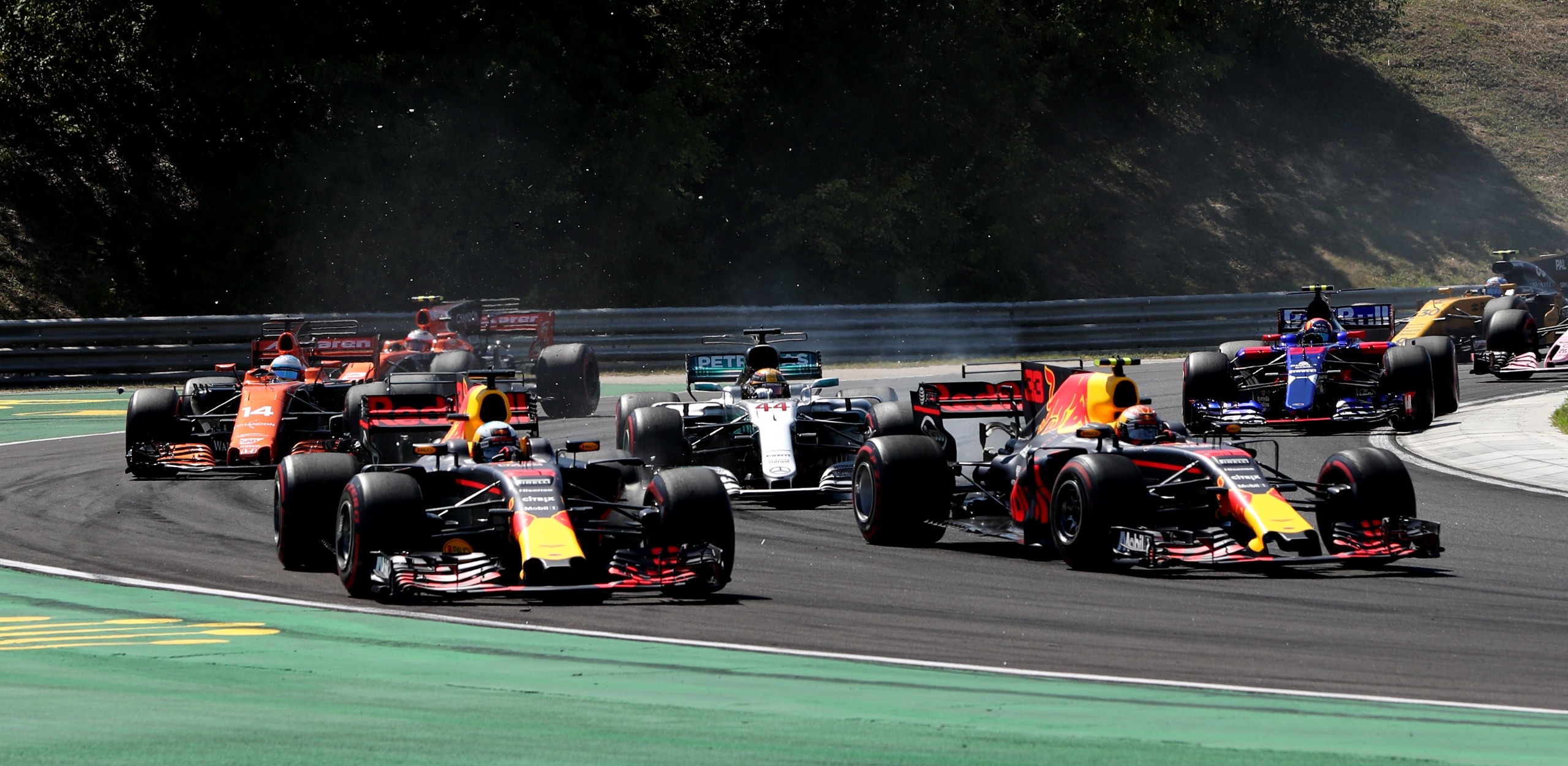
When Felipe Massa developed dizziness in FP2, Williams reserve driver Paul di Resta was called to substitute. Not having driven in F1 since 2013, and having never sat in the 2017 Williams, he had the nearly impossible task of taking the unfamiliar car set up for Massa and qualifying it within 107% of the fastest time to be guaranteed a place on the starting grid. He qualified 19th. Both Toto Wolff and Niki Lauda remarked that di Resta’s shock revival was the drive of the day, and furthermore should put di Resta back among the leading drivers to be considered for a permanent seat next year.
Ferrari announced that the 2018 Sauber would again use their engines, but this time, they’ll be current 2018 engines rather than the year-old Ferrari engines as in this season. This is bad news for current team driver Pascal Wehrlein. As a Mercedes supported driver, and with Sauber teammate, Marcus Ericsson associated with team sponsors, Ferrari’s renewed interest in the team could send him packing. Current F2 phenom Charles Leclerc is Ferrari’s Junior Team driver it most wishes to place in F1. With the Ferrari-engined Haas F1 team already announcing they’ll keep their current driver’s lineup, it’s almost certain Leclerc will drive for Sauber in 2018. Wehrlein will need plenty of luck finding a seat at this late date.
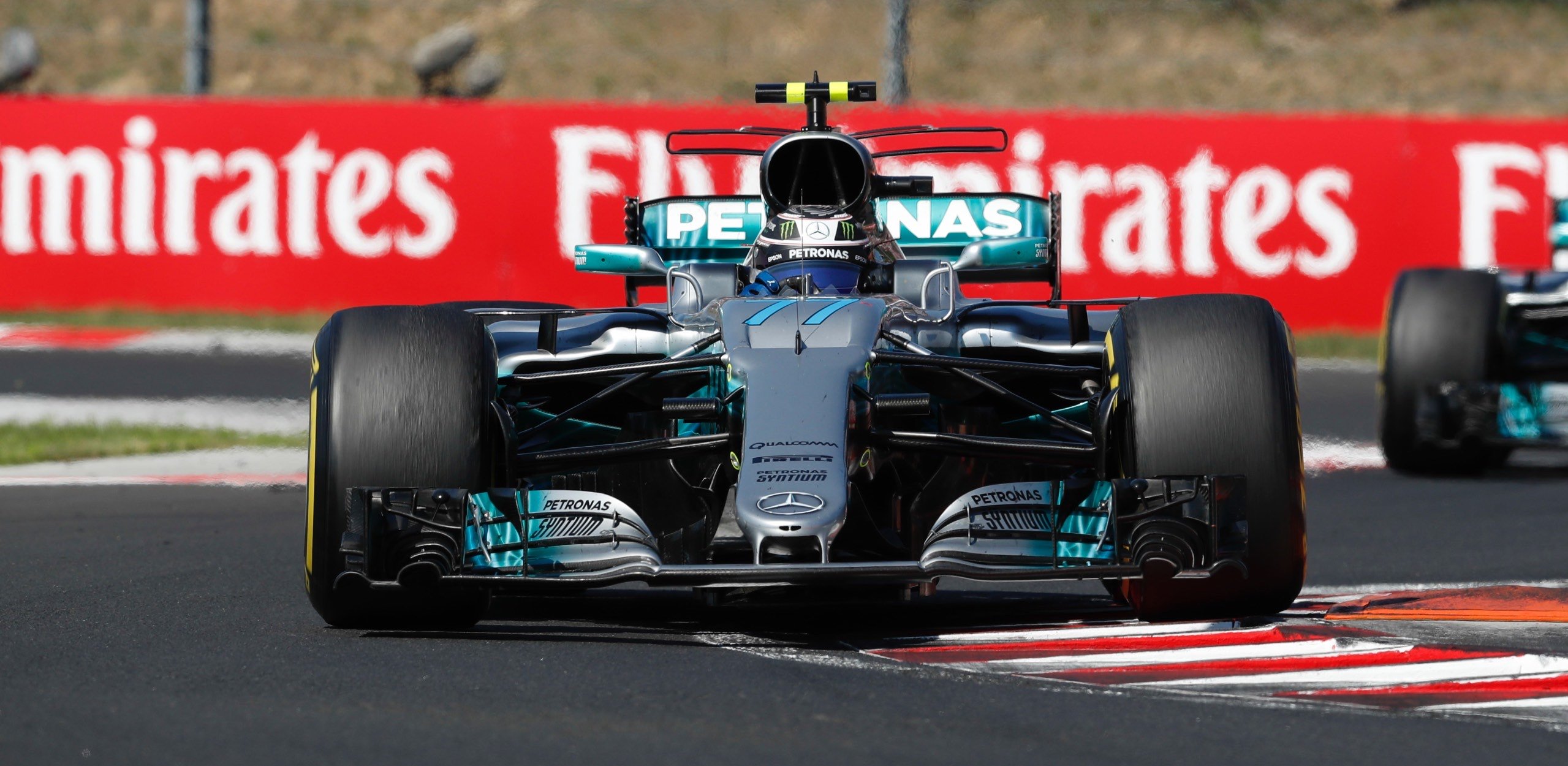
The FIA has made a three point halo a mandatory designed-in chassis element for the 2018 F1 season. Drivers hope these designs won’t obstruct a drivers vision as does the current test design. In the meantime, Niki Lauda and a number of the younger F1 drivers argue the halo is not in line with F1’s DNA.
As one of the most highly regarded F1 drivers in the last decade and 2008 Canadian Grand Prix winner, Robert Kubica was on his way to F1 stardom with Renault when he crashed on the first stage of the Ronde di Andora rally and lost part of his arm. He needed more than a year to recover, though his partially amputated forearm cost an enormous loss of mobility.
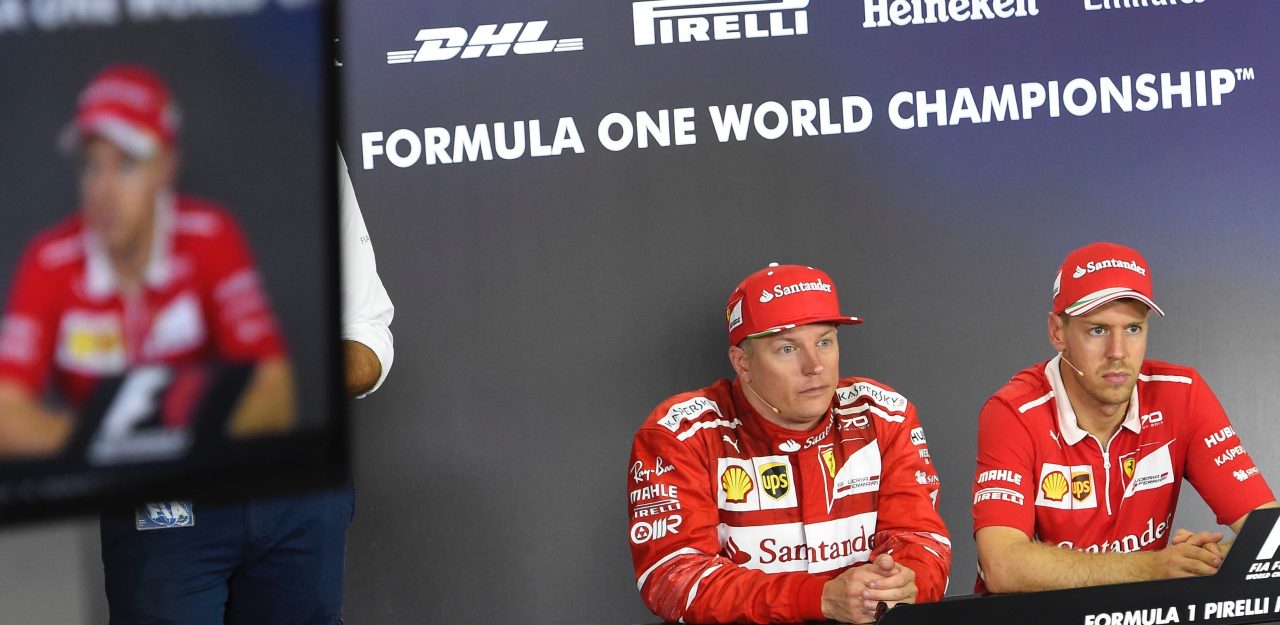
While many believed he could never drive in F1 again, Renault Team Principal Cyril Abitabol never gave up his dream to bring Kubica back. He offered Kubica a chance to experience the team’s F1 simulator and Kubica is said to have shocked everyone with his times. Abitabol has since offered Kubica two private tests in 2012 F1 cars which caused the team boss to admit that Kubica has ‘no obvious roadblocks’ to an F1 return.
As of this writing, Kubica will be testing Renault’s 2017 team car on July 31, the Monday following the Hungarian Grand Prix. Should Kubica return to F1, it would be a story for the ages.
We’ll see you after the Summer Break when the F1 circus regathers for the Belgian Grand Prix at Spa, August 27.
